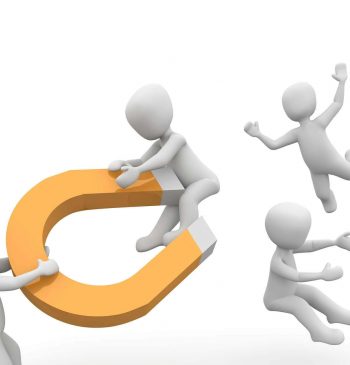10 Sep

In today’s interconnected world, omnichannel loyalty programs are a cornerstone for building enduring brand loyalty. These programs transcend traditional boundaries, allowing you to connect with your customers through many channels, each offering a unique and cohesive brand experience. This guide delves into the essence of loyalty programs, illustrating how they can revolutionize your approach to customer engagement and loyalty.
Embark on this journey to discover how omnichannel loyalty programs can elevate your brand’s relationship with its customers, fostering a deeper connection and a more rewarding experience for you and your clientele.
What is an Omnichannel Loyalty Program?
An Omnichannel Loyalty Program is a customer loyalty strategy that transcends traditional single-channel approaches, encompassing a variety of touchpoints to engage with customers. This holistic approach integrates multiple channels – brick-and-mortar stores, online platforms, mobile apps, and social media – to create a seamless and unified customer experience.
An omnichannel approach allows companies to meet their customers wherever they are, offering a consistent and personalized experience across all platforms. Therefore, many companies utilize B2C or B2B loyalty programs to keep existing customers. When carrying out these programs, companies can choose their channels. They can do this depending on their resources, goals, and capabilities.
Benefits of Omnichannel Loyalty Programs
Omnichannel loyalty programs represent a modern approach to customer relationship management, seamlessly integrating various channels of interaction and purchase to offer customers a more cohesive and rewarding experience. These programs are designed to engage customers across multiple platforms – in-store, online, mobile apps, and social media – ensuring a consistent and personalized experience. Businesses can create more targeted and effective loyalty strategies by leveraging data from these diverse touchpoints. Here’s a table outlining the key benefits of omnichannel loyalty programs:
| Benefit | Description |
|---|---|
| Enhanced Customer Experience | Provides a seamless and personalized shopping experience across all channels, increasing customer satisfaction. |
| Increased Customer Engagement | Engages customers on their preferred platforms, leading to higher interaction and participation in loyalty programs. |
| Improved Data Collection | Gathers comprehensive customer data from multiple channels, enabling more accurate customer profiling and targeting. |
| Higher Customer Retention | Builds stronger relationships with customers, leading to increased loyalty and repeat business. |
| Greater Brand Consistency | Ensures a uniform brand message and experience across all channels, reinforcing brand identity. |
| Boosted Sales | Encourages more frequent purchases and higher spending through tailored rewards and incentives. |
| Better Feedback and Insights | Facilitates collecting valuable customer feedback across channels, aiding in product and service improvement. |
| Increased Efficiency | Streamlines marketing and loyalty program efforts, reducing costs and improving ROI. |
| Flexibility and Adaptability | Allows businesses to quickly adapt to changing customer behaviors and market trends. |
| Cross-Channel Promotion | Enables effective cross-promotion of products and services across different channels. |
These benefits highlight how these loyalty programs can significantly enhance business and customer relationships, leading to mutual growth and success.
The Difference Between Conventional and Omnichannel Loyalty Programs
The evolution of marketing strategies has given rise to more sophisticated and effective ways to engage customers. This is particularly evident in the contrast between conventional loyalty programs and their modern counterpart, the omnichannel reward platforms. Traditionally, loyalty programs have been relatively straightforward. They typically operate on a single channel, such as a physical store or a basic online platform. These programs often use simple point systems, where customers earn points for purchases that can be redeemed for discounts or products.
The interaction is usually transactional, with limited personalization or engagement beyond the point of sale. In contrast, omnichannel loyalty programs represent a significant advancement. They become a more integrated, personalized, and engaging approach. This modern approach enhances the customer experience and provides businesses with valuable insights and a stronger connection with their customers.
What are the Channels Used in Omnichannel Loyalty Programs?
Before beginning to construct omnichannel loyalty programs, it is necessary to know their channels. Some examples of channels that can be used for a loyalty program are:
- The company’s website,
- Social media platforms,
- Physical stores.
By effectively utilizing these platforms, a brand can create a cohesive and rewarding loyalty program that resonates with customers across various touchpoints, enhancing their engagement and loyalty.
The Company’s Website
The company’s website is not just a portal but a dynamic engagement platform for the loyalty program. It is the central hub for program enrollment, access rewards, and tracking loyalty points. The website can offer highly personalized recommendations and exclusive offers tailored to each customer’s browsing and purchase history by leveraging advanced analytics and AI. This personalization enhances the user experience, making it more engaging and relevant.
Integration of loyalty program features on the website, such as a user-friendly dashboard, real-time point tracking, and easy reward redemption, ensures a seamless experience. The website is also a crucial data collection point, enabling the company to refine the loyalty program and improve overall customer experiences. Additionally, educational content about the benefits and workings of the loyalty program can be featured to encourage more sign-ups and active participation.
Social Media Platforms
Social media platforms transform a loyalty program into a vibrant community. These platforms allow brands to engage with customers through regular interactions, exclusive offers, and content that resonates with their audience. By incentivizing customers to follow, share, or interact with the brand’s social media profiles, they can earn loyalty points or rewards, turning everyday social media activities into rewarding experiences.
Leveraging social media for exclusive loyalty program promotions enhances brand visibility and attracts new members. It’s a space where customers can share their experiences and feedback, providing invaluable insights for improving the loyalty program. Brands can also use social media to celebrate loyal customers, share their stories, and create a sense of belonging among the community.
Physical Stores
Physical stores are the cornerstone of tangible brand experiences, where the benefits of a loyalty program come to life. Integrating the loyalty program at the point of sale allows customers to earn and redeem rewards during their shopping journey. Exclusive in-store offers for loyalty program members can be a significant draw, encouraging more frequent visits.
The in-store experience is enhanced by training staff to effectively understand and promote the loyalty program, offering each customer a personalized shopping experience. This face-to-face interaction is invaluable for gathering direct feedback and understanding customer preferences. Additionally, physical stores can host exclusive events or early-access sales for loyalty program members, further strengthening the connection between the brand and its loyal customers.
Why Utilize an Omnichannel Loyalty Program?
Since retaining customers and generating more sales are aimed at with a loyalty program, reaching more people can be beneficial. Many channels can be used in a loyalty program, and designing it as an omnichannel can allow it to reach a wider audience. Limiting the program to a few channels may have its advantages. However, by carrying out a loyalty program through all channels, more customers may use it. In turn, an omnichannel loyalty program can increase brand loyalty better.
How to Create Omnichannel Loyalty Programs
Omnichannel loyalty programs have emerged as a key strategy for businesses looking to foster deeper customer connections. These programs integrate various customer touchpoints into a cohesive loyalty experience and require careful planning and execution. Here’s a step-by-step guide to creating an effective loyalty program:
- Determine if a loyalty program aligns with your business objectives and technological capabilities.
- Conduct customer research to understand their preferences and behaviors and segment your customer base for targeted strategies.
- Select and integrate relevant channels (like in-store, online, mobile, and social media) for a seamless customer experience.
- Set specific loyalty program targets that align with your overall business goals.
- Plan the structure of the loyalty program, including point systems, rewards, and personalization tactics.
- Determine the costs involved and estimate the return on investment to ensure financial viability.
- Utilize technology for program management, data analytics, and customer communication, ensuring scalability.
- Educate staff about the program and ensure consistent messaging across all touchpoints.
- Strategically launch the program with effective marketing campaigns to create awareness and encourage sign-ups.
- Regularly track the program’s performance, gather customer feedback, and make necessary adjustments for continuous improvement.
Following these streamlined steps, you can develop a loyalty program that engages customers across multiple channels, enhancing their experience and loyalty to your brand.
Omnichannel Loyalty Program Examples
As they can be a valuable tool for a company to retain its customers and generate more sales over time, many companies use loyalty programs focused on these goals. While some loyalty programs are done through a single channel, others are designed to be omnichannel. Examining some examples in this area can be a good idea to understand better what an omnichannel loyalty program is. For instance, loyalty programs carried out by Starbucks and Sephora can be good examples to learn about. So, let’s take a quick look at these programs.
1. Starbucks
Since it is the biggest coffeehouse chain in the world, Starbucks may know a thing or two about marketing. The company carries out a rewards program to keep its existing customers returning for more. Instead of using a traditional card, Starbucks operates this program through its app. Along with making the points easier to track, the company gets access to various types of information, like the user’s product preferences, with this method. This allows the company to collect some relevant data about customers.
2. Sephora
Beauty products can be expensive, and omnichannel loyalty programs can be a win-win for customers and companies. Sephora’s Beauty Insider reward program can be a good example of a loyalty program offering customers more than a traditional approach. In this program, customers are offered a lot of versatility in using the points they earn with purchases. For example, they can spend their points on discounts, gift cards, or exclusive products.
You can reach our previous article at https://www.apexloyalty.com/how-to-enhance-lifecycle-marketing-with-loyalty-programs/







